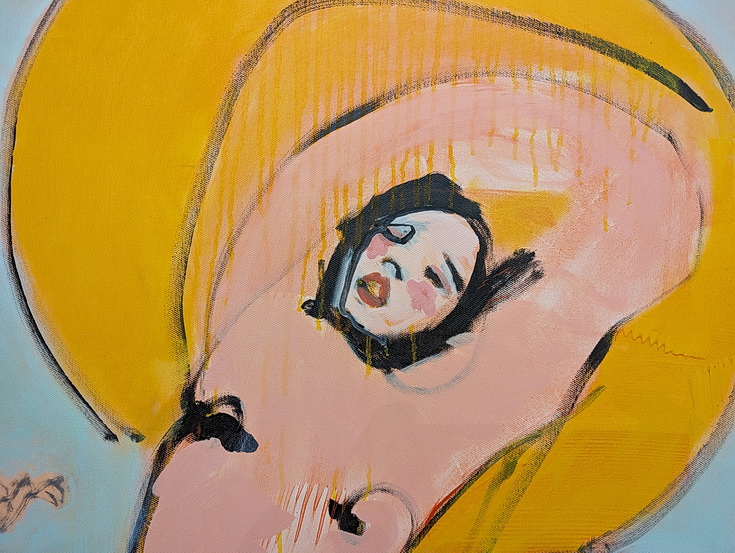
There’s not much time left to catch this wonderful exhibition by Jessica Brox at the Fitzrovia Gallery in central London, as it closes this Sunday, 23rd July 2023.
Her first solo exhibition in the UK showcases the bold female portraits that her name is associated with via international digital platforms.
The gallery said:
Brox’ paintings are about her. And so are her drawings. And her poems. Each on their own is a recognition of her own being; an image of her body, mature and female; a sketch of her face as she sees it in the bathroom mirror; thoughts she simply wouldn’t put into speech.
Created in the aftermath of divorce, the work documents a transformation. But Brox work is not about gender structures. ‘A Doll House is no more about women’s rights than Shakespeare’s Richard II is about the divine right of kings,…’ Henrik Ibsen’s biographer Michael Meyer said in an attempt to deter feminists from holding the Norwegian playwright up as an early spokesperson for gender equality.
And he was not entirely wrong: ‘I thank you for the toast, but must disclaim the honour of having worked for the women’s rights movement… True enough, it is desirable to solve the woman problem, along with all the others; but that has not been the whole purpose.
My task has been the description of humanity’, Ibsen declared at a banquet given in his honour by the Norwegian Woman’s Rights League in May 1898.
Nonetheless, structures exist and within these women are compromised. Hence the need for a rebalancing act, happening this moment. Brox’ practice is her coming out of the doll house and becoming who she is, but her figures are – like angels – genderless.
They added:
Everything starts with drawing for Brox. She renders figures with a few lines, making it a shorthand for her fleshy painting.
There are rarely interiors, these being replaced with smudged pastel or swift charcoal. One comes to think of Themes and Variations, Matisse’s systematic execution of mainly a female model in first charcoal then pen, ink, or pencil.
Distinct forms unravel on the sheet as lines divide the space; the sparsity of the medium being both fun and an earnest comment on artistic legacy. Brox, unlike Matisse, relies on mirrors and memory for a model.
Years of attending life drawing sessions pay off in studies of seated nudes or figures caught in movement. Nude Kneeling (after Duchamp), a composition of a nude in the act of kneeling and caught at various stages in doing so (pitched against a turquoise backdrop) is fantastically refreshing in its cubist format and unabashed allusion to Marcel Duchamp’s 1912 masterpiece Nude Descending a Staircase 2.
Brox’ attraction to 16th century religious art is better seen in her paintings. In these, she explores ideas of transformation using a combination of diluted oils and impasto.
Working with a cast of characters recognised from the drawings and largely based on her own image, she elaborates the implications of depicting a female self.
A celestial being attributed with wings reappears throughout the oeuvre and so does a monumental nude, seemingly shouting of womanhood. In Brox’ interest is the ability to transform, as a woman, without fear of being judged by what Ibsen deemed a ‘society with a male consciousness’.
More info
Coming Out of the Doll House by Jessica Brox
139 Whitfield Street, London, W1T 5EN
11th – 23rd July, open daily 12 – 6pm

